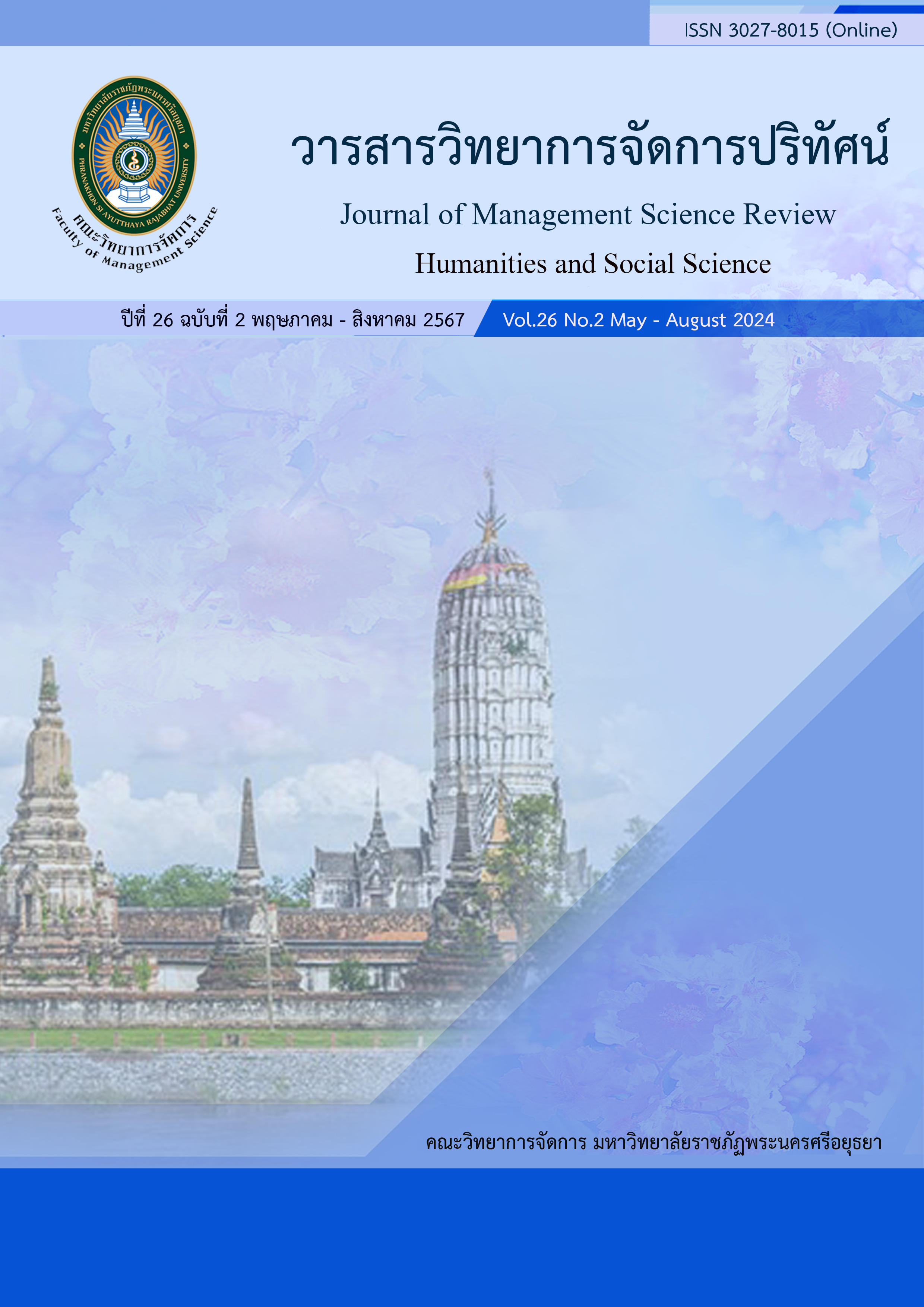Comparison of Activity-Based Costs and Returns of Sugarcane Cultivation Between Drip Irrigation and Flood Irrigation Methods: A Case Study of Sugarcane Farmers in Hua Thale Subdistrict, Bamnet Narong District, Chaiyaphum Province
Keywords:
Activity-Based Costing, Returns, Sugarcane Cultivation, Drip Irrigation System, Flood Irrigation SystemAbstract
This research aimed to 1) analyze the activity-based costing of sugarcane cultivation between drip irrigation and flood irrigation methods, and 2) compare the returns and activity-based costs of sugarcane cultivation between drip irrigation and flood irrigation methods. The study was qualitative, employing focus group discussions as the primary tool. Subsequently, in-depth interviews and observations were conducted. The research sample included 10 registered small-scale sugarcane farmers and 6 individuals involved in the cultivation process. The sample selection was carried out through purposive sampling
The result showed that the activity-based cost of sugarcane cultivation using the drip irrigation method amounts to 195,752.90 baht in total, or 11,514.88 baht per rai. In comparison, the activity-based cost for flood irrigation totals 100,425.42 baht, or 10,042.54 baht per rai. When comparing the activity-based costs, sugarcane cultivation with drip irrigation incurs a higher cost of 1,472.34 baht per rai than flood irrigation. Regarding returns, the drip irrigation method yields 3,890.39 baht per rai more than the flood irrigation method, with the income from selling sugarcane being 5,362.73 baht per rai higher for drip irrigation compared to flood irrigation.
References
Department of Agriculture. (2004). Academic Papers Sugarcane. https://www.agkb.lib.ku.ac.th/doa/search_detail/result/327603.
Field and Renewable Energy Crops Research Institute. (2004). Academic Papers Economic crops. http://www.lib.doa.go.th/multim/e-book/EB00294.pdf
Kaplan,R.S , & Copper, R (1991). (1991). Profit priorities from activity-based costing. Harvard Business Review, 130-135.
Krootboonyong, C. (2011). Management Accounting. se-education.
Krungsri Research. (2023). Industry Outlook 2023 – 2025: Sugar Industry. https://www.krugsri.com/en/research/industry/industry-outlook/agriculture/sugar/io.
MacArthur, J.B. (1996). Activity-based costing to throughput accounting. Strategic Finance, 77 (10), 30.
Maneesri, S. (2002). Guideline for Cost Reduction Using Activity Based Costing System : Case Study of V.P.F. Group Company Limited. [Master’s thesis]. Chiang Mai University.
Office of The Cane and Sugar Board. (2017). Sustainable Sugarcane Management. https://www.ocsb.go.th/wp-content/uploads/2023/03/144-7354.pdf.
_______. (2023). Annual Report to sugarcane plant areas and production 2565-66. https://www.ocsb.go.th/2023/reports-articles/area-yield/21623.
Potchanasin, C., Athipanyakul, T., & Nantajit, C. (2022). Impacts of Policy and Policy and Price Changes on Sugarcane Production in Central Part of Thailand. Journal of Economics and Management Strategy, 10(1), 15-32.
Royal Irrigation Department. (1996). Information on water use to plants in Eastern region. Irrigation Agriculture Department, Ministry of Agriculture and Cooperatives.
Wonprasaid, S., & Girdthai, T. (2015). Soil and Water Management for Ratoon Yield Improvement of Sugarcane in the Northeast. Suranaree University of Technology
Thongsukhowong, A. (2016). Cost Accounting. se-education.
Toommanon, V. (2001). Activity Based Costing : ABC. Bangkok : Ionic, 302.
ttb analytics. (2023). ttb analytics expected in 2023, Agriculturist income for 5 economic crops will be at 833 billion baht, a decrease of 4.7%. https://www.ttbbank.com/th/newsroom/ detail/economic-crops-2566.




